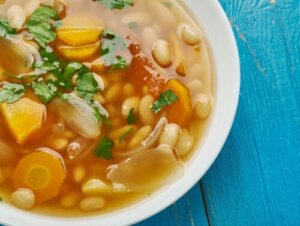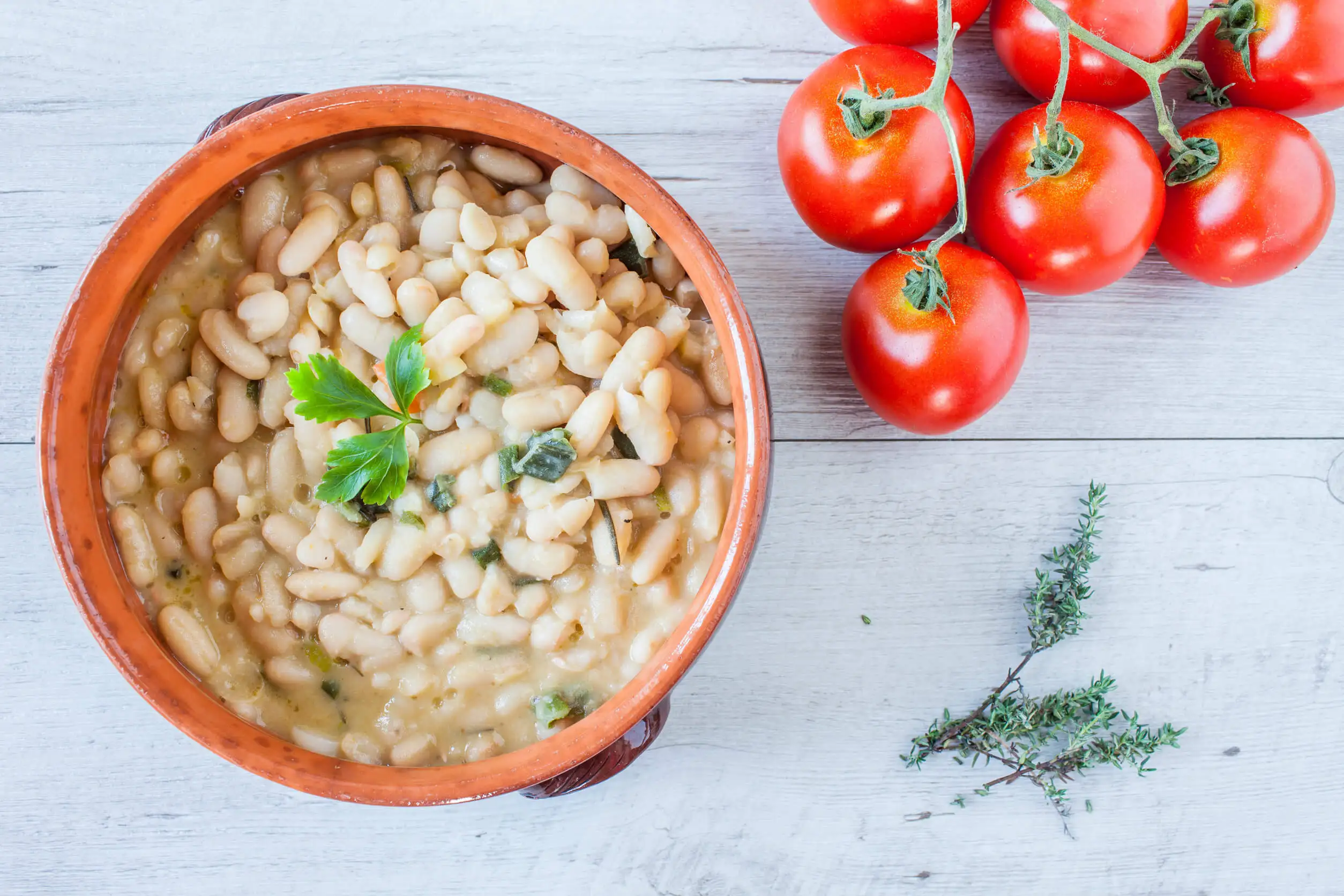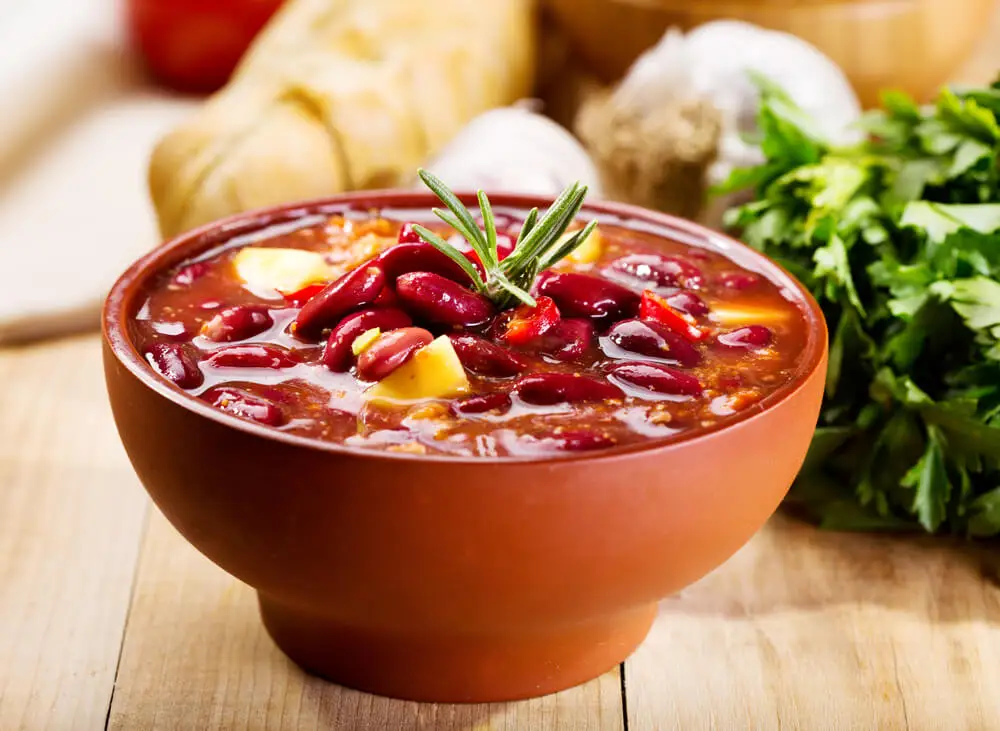Fasolada, A Typical Greek Recipe


Written and verified by the nutritionist Saúl Sánchez Arias
Fasolada is a traditional Greek dish that has several benefits for our health. It contains a good amount of essential nutrients, which helps to reduce the risk of deficiency. It’s also a very tasty dish. It isn’t difficult to prepare, and so we’ll show you how to make it at home.
Keep in mind that legumes have to be included in our diet on a regular basis. Almost all nutrition experts recommend eating them at least a couple of times a week. In the case of fasolada, white beans are used. These are available both dried and canned, in a brine that increases their shelf life.
Benefits of white beans

Before we begin, it’s important to find out the main benefits of including white beans in the diet. Don’t forget that the glass jar kind doesn’t lose any nutritional properties. It’s a processed product, but in no case is it considered harmful to your health. Quite the contrary.
They improve intestinal transit
White beans, like other pulses, are characterized by containing large amounts of fiber inside, a substance that isn’t digestible.
It adheres to the fecal bolus, increasing its volume, which allows a greater stimulation of the mechanoreceptors of the tube. From this point on, more intense peristaltic movements are experienced.
The result of all this is a lower incidence of constipation. In fact, a diet low in fiber is considered to be one of the main risk factors for the development of this pathology, as indicated by a study published in the journal Clinics in Geriatric Medicine.
In addition, fiber can ferment inside the digestive tract and thus serve as an energy substrate for the bacteria that make up the microbiota. Keeping this set of microorganisms in a good condition protects against digestive disorders and prevents the development of symptoms that are typical of intolerances. It also modulates the inflammatory mechanisms in the organism.
They prevent the development of anemia
In this section on micronutrients, we should mention the iron content of white beans. This is an essential mineral that allows the transportation of oxygen through the blood.
If the supply of iron isn’t good, anemia will occur. This is evidenced by research published in the journal The Medical Clinics of North America.
It’s true that iron of vegetable origin doesn’t have a high absorption rate. However, this can be corrected by ensuring that vitamin C is taken in conjunction with it. Vitamin C maximizes the availability of the mineral in the gut, preventing it from being excreted in excess through the feces.
However, the best way to achieve optimal dietary iron intake is to ensure the presence of animal foods in the diet. These are best for the prevention of anemia, although pulses also help to prevent the development of this kind of complex pathology.
Here’s another interesting article: 6 Tips to Start a Plant-Based Diet
They increase the feeling of satiety
Pulses provide a significant amount of carbohydrates, but these are low on the glycemic index. Their impact on blood sugar levels isn’t of concern. In addition, their energy density isn’t high, so they can be included in the context of a low-calorie diet.
It should be noted that the concentration of fiber allows them to increase the feeling of satiety, as stated in a study published in the European Journal of Clinical Nutrition. This is key when considering an energy-deficient diet, as too much appetite could jeopardize adherence to the treatment.
Fasolada ingredients
To prepare an authentic Greek fasolada, you’ll need the following ingredients:
- 400 grams (16 oz) of dried white beans
- 2 large carrots
- 2 red onions
- Two ripe tomatoes
- 1 glass of extra virgin olive oil
- A stick of celery
- Pepper and salt to taste
With these quantities, you’ll make enough servings for 4 people. Please note that the quality of the beans will have a significant influence on the final result. It’s possible to find them in different sizes, although, in this case, it’s always advisable to opt for the dried version rather than the canned version.

How to prepare it
- Soak the beans to soften them. You should leave them for a period of 24 hours, and so we recommend soaking them the night before in order to prepare the dish at the end of the following day.
- Once they’re soft enough, heat water in a saucepan and add the beans and bring them to a boil. The water should cover the beans.
- At the same time, cut the carrot into slices, and peel them. Chop the onions and peel the tomatoes, removing all the seeds. Chop the tomatoes into relatively small pieces. Clean the celery and chop it.
- When all the vegetables are ready, add them to the pot with the water and add the olive oil, salt, and pepper to taste.
- Let it simmer. However, keep in mind that you will need to increase the amount of water gradually to prevent the ingredients from sticking or burning. It is also a good idea to stir occasionally with a wooden utensil.
- As soon as the beans are soft, turn off the heat. This can take at least a couple of hours. However, you mustn’t overcook them, otherwise they could break up and lose quality in terms of texture.
- On the other hand, you could add parsley or bay leaves to improve the flavor. Of course, the dish must always be eaten hot.
- Keep in mind that fasolada can be frozen or kept in the fridge for a couple of days. This will increase its shelf life. To reheat it, you can use the microwave or serve it in earthenware casseroles and place them over medium heat.
Check out this recipe: Surprise Your Guests with a Delicious Greek Salad
Contraindications of fasolada
Fasolada is considered a healthy dish. Even so, in certain cases, it may be inadvisable to eat it. You should bear in mind that pulses can produce gas when consumed in excess. In this case, it’s best to ensure a correct cooking process so that the fibers cause the least possible digestive problems.
On the other hand, people who suffer from chronic intestinal pathologies or dysbiosis may experience an increase in symptoms from the inclusion of large amounts of fiber in the diet. It’s best to consult an expert in nutrition to optimize the diet and thus help you to keep these conditions under control.
If you notice that you experience digestive disorders after consuming legumes or products with a lot of fiber, we recommend that you visit the specialist. Do this also if you experience gas pains.
Treatment with probiotics may be necessary in order to increase the diversity of bacteria that live in the intestine, which will allow for a lighter and more efficient digestion.
Prepare an authentic Greek fasolada
As you’ve seen, it’s really easy to prepare Greek fasolada. It’s a dish that has certain similarities to fabada, although, in this case, no animal foods are used in its preparation. For this reason, its protein content will be lower, something that’s good to keep in mind for the rest of the day’s diet.
Don’t forget that you’ll need to combine a good diet with other healthy lifestyle habits to achieve a good state of health. Regular physical exercise is necessary, as well as ensuring a good night’s rest. Ensuring exposure to sunlight will also make a difference, as this increases vitamin D synthesis.
All cited sources were thoroughly reviewed by our team to ensure their quality, reliability, currency, and validity. The bibliography of this article was considered reliable and of academic or scientific accuracy.
- Warrilow, A., Mellor, D., McKune, A., & Pumpa, K. (2019). Dietary fat, fibre, satiation, and satiety-a systematic review of acute studies. European journal of clinical nutrition, 73(3), 333–344. https://doi.org/10.1038/s41430-018-0295-7
- Massey A. C. (1992). Microcytic anemia. Differential diagnosis and management of iron deficiency anemia. The Medical clinics of North America, 76(3), 549–566. https://doi.org/10.1016/s0025-7125(16)30339-x
- Costilla, V. C., & Foxx-Orenstein, A. E. (2014). Constipation: understanding mechanisms and management. Clinics in geriatric medicine, 30(1), 107–115. https://doi.org/10.1016/j.cger.2013.10.001
This text is provided for informational purposes only and does not replace consultation with a professional. If in doubt, consult your specialist.








